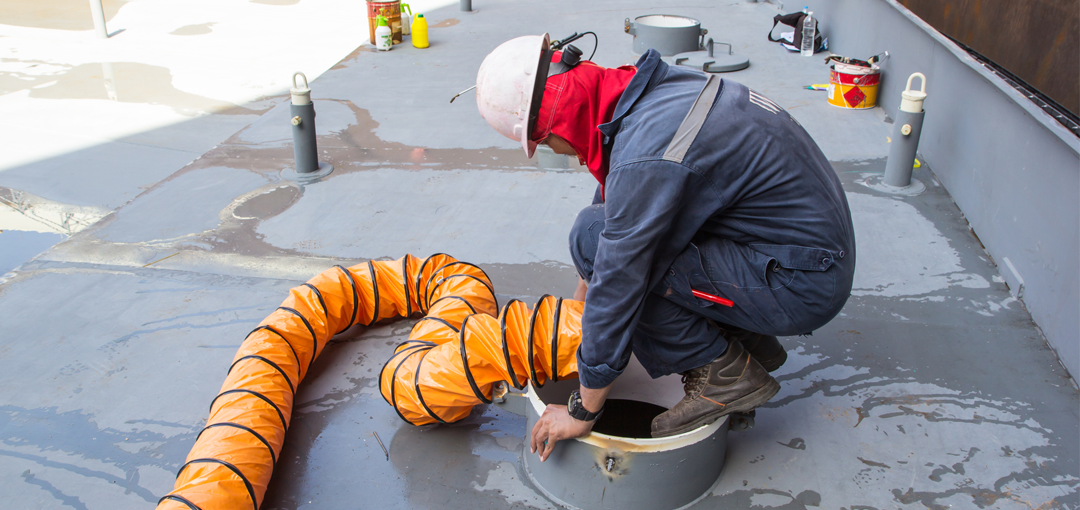Confined Space Ventilation: 7 Requirements For Safety
Confined Space Ventilation: 7 Requirements For Safety
September 4, 2023 |
Confined spaces are often encountered in various industries such as construction, manufacturing, and agriculture. These spaces, while essential for certain tasks, can pose significant risks to workers due to their limited entry and exit points, poor air circulation, and potential exposure to hazardous gases or substances. Confined space ventilation plays a critical role in maintaining a safe working environment within such spaces. In this article, we will delve into the seven essential requirements for ensuring safety through proper confined space ventilation. By adhering to these guidelines, employers and workers can effectively mitigate the dangers associated with working in confined spaces.
Understanding Confined Spaces
Before addressing ventilation requirements, it’s vital to have a clear understanding of what constitutes a confined space. A confined space is characterized by its limited entry and exit points, as well as its lack of adequate ventilation. Examples include storage tanks, silos, sewers, and tunnels. These spaces often contain hazardous gases, fumes, or vapors that can accumulate, creating an environment unfit for human occupancy. Recognizing confined spaces in the workplace is the first step in implementing effective ventilation strategies.
Conducting a Thorough Risk Assessment
Prior to any work being conducted in a confined space, a comprehensive risk assessment must be carried out. This assessment should identify potential hazards, assess the risks involved, and determine the necessary control measures, including ventilation. Factors such as the type of work to be performed, the presence of toxic substances, and the confined space’s size and configuration must be considered. By understanding the specific risks, employers can tailor their ventilation approach to address the unique challenges posed by each confined space.
Choosing the Right Ventilation System
Selecting an appropriate ventilation system is crucial to ensuring the safety of workers in confined spaces. The two main types of ventilation systems are general mechanical ventilation and local exhaust ventilation. General mechanical ventilation involves the use of fans to circulate fresh air throughout the confined space. Local exhaust ventilation, on the other hand, captures and removes contaminants at the source before they spread. The choice between these systems depends on factors such as the nature of the contaminants, the space’s layout, and the equipment available.
Calculating Airflow Requirements
Proper airflow is fundamental to effective confined space ventilation. The ventilation system must be capable of supplying sufficient fresh air to displace and dilute any hazardous gases or fumes present. Calculating the required airflow involves considering the volume of the confined space, the types and quantities of contaminants, and the permissible exposure limits for those substances. This calculation ensures that the ventilation system can maintain safe air quality levels and prevent the accumulation of toxic substances.
Ensuring Proper Ventilation Placement
Strategic placement of ventilation equipment is essential for optimal air circulation within confined spaces. The placement should promote the even distribution of fresh air and the effective removal of contaminants. In some cases, multiple ventilation points may be necessary to achieve the desired airflow pattern. Factors such as the space’s layout, obstacles, and potential air movement must be taken into account when determining the best placement for ventilation equipment.
Monitoring and Testing Air Quality
Ventilation systems alone are not sufficient to guarantee safety in confined spaces. Regular monitoring and testing of air quality are essential to verify the effectiveness of the ventilation strategy. Air quality testing should be conducted before entry, periodically during work, and upon completion of tasks. Gas detectors, atmospheric monitors, and other testing equipment can provide real-time data on oxygen levels, combustible gases, and toxic substances. If air quality deteriorates, immediate action can be taken to evacuate workers and adjust the ventilation system accordingly.
Providing Adequate Training and Equipment
Equipping workers with the necessary knowledge and tools is a cornerstone of confined space safety. Proper training should cover topics such as recognizing confined spaces, understanding ventilation systems, operating monitoring equipment, and responding to emergencies. Additionally, workers should be provided with personal protective equipment (PPE) that aligns with the identified risks. This may include respiratory protection, gas masks, and protective clothing. By empowering workers with the right training and equipment, employers enhance their ability to work safely within confined spaces.
Confined space ventilation is a critical element of ensuring the safety and well-being of workers who must operate in these challenging environments. By understanding the unique risks posed by confined spaces, conducting thorough risk assessments, selecting appropriate ventilation systems, calculating airflow requirements, optimizing ventilation placement, monitoring air quality, and providing adequate training and equipment, employers can create a safer working environment. Prioritizing these seven requirements will not only protect workers but also contribute to a culture of safety that extends throughout the organization.
